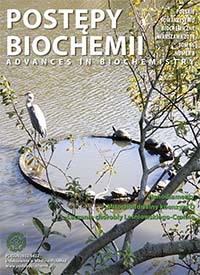Different faces of the mitochondrial coenzyme Q
DOI:
https://doi.org/10.18388/pb.2019_289Abstract
Coenzyme Q is a fat-soluble molecule present in all cell membranes, including the inner mitochondrial membrane. Mitochondrial Q (mQ) is a key electron carrier in the respiratory chain and an important antioxidant. On the other hand, mQ participates in the production by respiratory chain of mitochondrial reactive oxygen species (mROS) that are formed as a byproduct of oxygen metabolism or under oxidative stress conditions. Increased mROS production can lead to a series of oxidative damage that underlies cell aging or a number of diseases. In addition, mROS act as signaling molecules. Respiratory chain electron carriers, primarily mQ-related protein complexes, are considered the main mROS production sites. With age, the level of Q, and in particular its reduced form, decreases in the body. Disorders associated with coenzyme Q deficiency are mainly associated with excessive mROS production and a decrease in ATP production, which may result in mitochondrial, cardiovascular or neurodegenerative diseases.
Downloads
Published
Issue
Section
License
All journal contents are distributed under the Creative Commons Attribution-ShareAlike 4.0 International (CC BY-SA 4.0) license. Everybody may use the content following terms: Attribution — You must give appropriate credit, provide a link to the license, and indicate if changes were made, ShareAlike — If you remix, transform, or build upon the material, you must distribute your contributions under the same license as the original. There are no additional restrictions — You may not apply legal terms or technological measures that legally restrict others from doing anything the license permits.
Copyright for all published papers © stays with the authors.
Copyright for the journal: © Polish Biochemical Society.




